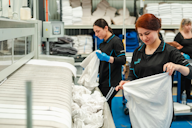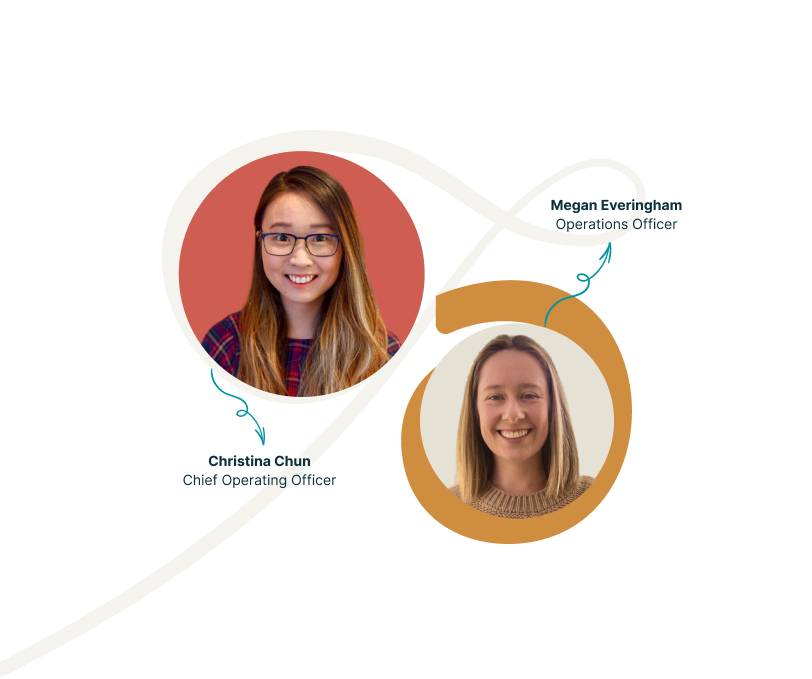
Resource library
This library offers a curated collection of valuable tools, guides, and resources that exist in the social enterprise sector. Explore guides, articles and many more to support your journey, whether you’re starting a social enterprise, tackling sector challenges, or navigating the impact economy.
Suggest a new educational resource or update here to help keep this library useful.
19 results found
.png?w=192)
‘Are We Mates Yet? Agreement-Making Between States and First Nations’, Dr. Tony Dreise
ReportsThis report analyses colonial impacts, truth-telling, and pathways to self-determination, offering insights into decolonisation. While focused on agreement-making between Australian states and First Nations peoples, its strategies for embedding equity and Indigenous sovereignty into governance, policy, and community development have broader relevance.
‘Are We Mates Yet? Agreement-Making Between States and First Nations’, Dr. Tony Dreise-1.png?w=192)
'Business for good: the size and economic contribution of social enterprise in Australia', Social Enterprise Australia
ReportsThis report by Social Enterprise Australia reveals that 12,033 social enterprises contribute $21.3 billion to Australia’s economy, employing over 206,000 people.
'Business for good: the size and economic contribution of social enterprise in Australia', Social Enterprise Australia-1.png?w=192)
'Connecting Pathways to Employment with the Work Integration Social Enterprise (WISE) Model', Centre for Social Impact
ReportsThis report by CSI Swinburne introduces the WISE-Ability model, a framework for transforming Australian Disability Enterprises (ADEs) into more inclusive organisations. It supports employment pathways for people with disabilities, aligning with NDIS funding and fostering open employment opportunities.
'Connecting Pathways to Employment with the Work Integration Social Enterprise (WISE) Model', Centre for Social Impact
Costs and benefits of tailored job support programs, Paul Ramsay Foundation
ReportsThis research demonstrates the costs and benefits of tailored employment support programs for people facing complex barriers to work, providing evidence and tools to help funders and organisations make effective investments in job-seeker programs. This report from 2024 aims to collate and strengthen existing evidence of ’what works’ in which contexts, while establishing an evidence base for the type and level of resourcing needed to achieve more enduring outcomes for those facing complex barriers to work.
Costs and benefits of tailored job support programs, Paul Ramsay Foundation.png?w=192)
‘Earth for All: A Survival Guide for Humanity - Executive Summary’, Earth4All
ReportsEarth4All’s two-year research investigates pathways to achieve global wellbeing within planetary boundaries by 2100. It examines two scenarios: ‘Too Little Too Late,’ continuing current economic policies, and ‘Giant Leap,’ requiring bold decisions and investments. The report identifies five critical turnarounds—poverty, inequality, women’s empowerment, food systems, and energy transformation—and calls for active governments, wellbeing economies, and urgent action this decade. Using system dynamics models, it highlights affordable economic shifts and proposes citizens’ assemblies to overcome political barriers.
‘Earth for All: A Survival Guide for Humanity - Executive Summary’, Earth4All
'Leadership in Social Enterprise: How to Manage Yourself and the Team', Schwab Foundation for Social Entrepreneurship
ReportsThis report by the Schwab Foundation for Social Entrepreneurship supports social enterprise leaders in tackling unique challenges like balancing social impact with commercial goals, managing diverse teams, and meeting stakeholder expectations. Grounded in global insights from interviews, case studies, and surveys, and developed with input from experienced social entrepreneurs, it offers practical, stage-specific guidance. Designed as a collaborative tool, it fosters knowledge sharing and equips leaders with strategies to drive mission-driven organisations effectively.
'Leadership in Social Enterprise: How to Manage Yourself and the Team', Schwab Foundation for Social Entrepreneurship
'Part Discount Grocer, Part Social Connection: Defining Elements of Social Supermarkets', Centre for Social Impact
ReportsThis research paper by the Centre for Social Impact Flinders explores social supermarkets as an innovative model for addressing food insecurity. Combining affordable food access with social support, these supermarkets move beyond traditional food relief by integrating dignity, choice, and community connection. The paper highlights how social supermarkets offer a comprehensive approach, including financial, emotional, and skill-building services, fostering long-term independence and resilience for clients.
'Part Discount Grocer, Part Social Connection: Defining Elements of Social Supermarkets', Centre for Social Impact.png?w=192)
'Payment by Outcomes: Measuring the Effectiveness of Jobs-Focused Social Enterprises', Centre for Social Impact
ReportsThis report by CSI Swinburne evaluates the Australian Government’s Payment by Outcomes (PBO) trial, which funds jobs-focused social enterprises based on employment outcomes. It assesses the impact on individuals facing work barriers, including those with disabilities, and explores the trial’s systemic and policy implications for employment services.
'Payment by Outcomes: Measuring the Effectiveness of Jobs-Focused Social Enterprises', Centre for Social Impact.png?w=192)
Prepare for funding, SEFA
ReportsCreated by SEFA, this guide outlines four key areas—Purpose, Plan, Profit, and Prudence—for social enterprises to focus on when preparing for funding.
Prepare for funding, SEFA
Project Drawdown: The World’s Leading Resource for Climate Solutions
ReportsProject Drawdown is a nonprofit organisation dedicated to identifying and scaling science-based solutions to combat climate change. Focused on equitable, safe, and effective approaches, the organisation conducts research, engages stakeholders, and promotes solutions to drive meaningful action. Through storytelling and collaboration, Project Drawdown shifts the narrative on climate change from despair to possibility, offering practical pathways for individuals and organisations to contribute to impactful climate action.
Project Drawdown: The World’s Leading Resource for Climate Solutions.png?w=192)
'Social Procurement Document Library', Victorian Government
ReportsThis web portal provides access to a library of documents related to Victoria's Social Procurement Framework, which governs how the Victorian Government undertakes social procurement when procuring goods, services and construction. It includes the framework itself, case studies, buyer guidance documents, and other resources. This information provides insight into how a government entity approaches social procurement. For social enterprises, it offers guidance on how to engage with government buyers, and demonstrates the types of social and sustainable outcomes a government is likely to be seeking to achieve through its procurement activities.
'Social Procurement Document Library', Victorian Government.png?w=192)
'Space for Community: Strengthening our Social Infrastructure', Power to Change (2022)
ReportsThis report by the British Academy and Power to Change examines how social infrastructure strengthens community resilience. It highlights key spaces, their role in fostering inclusivity, and policy recommendations for maintaining and enhancing social infrastructure.
'Space for Community: Strengthening our Social Infrastructure', Power to Change (2022)
'Stories to save the world', Futerra
ReportsThis resource explores the power of storytelling in addressing climate change - its underlying ideas can be applied to other areas of impact. It argues that while the science and technology for combating climate change exist, what's missing is the right story to motivate action.
'Stories to save the world', Futerra
'Systems Mindsets & Practice for Social Enterprise', Social Enterprise World Forum 2022
ReportsThis resource explores the importance of systems thinking in social enterprise, advocating for interconnected approaches to tackle complex challenges. It introduces key practices, including adopting pluralistic perspectives, fostering collaborative networks, and addressing systemic issues through targeted interventions. By focusing on relationships, complexity, and leverage points, social enterprises can drive meaningful change while balancing specific actions with broader systemic goals.
'Systems Mindsets & Practice for Social Enterprise', Social Enterprise World Forum 2022.png?w=192)
'The State of Social Enterprise 2024', World Economic Forum
ReportsThis report shows social enterprises, led 50% by women, make up 3% of global businesses, generating $2 trillion revenue and 200 million jobs across 80+ countries.
'The State of Social Enterprise 2024', World Economic Forum
'The Water of Systems Change', FSG
ReportsThis framework highlights how to create sustainable social impact by addressing systemic factors that maintain social and environmental challenges. It introduces three levels of systems change—structural, relational, and transformative—emphasising the importance of shifting policies, power dynamics, and deep-seated beliefs. By engaging at all levels, organisations can drive meaningful, lasting change that is resilient, inclusive, and adaptable.
'The Water of Systems Change', FSG.png?w=192)
Voices on Work: Young People with Disability in Greater Melbourne
ReportsThis report by SVA and CYDA explores the employment experiences of young people with disability in Greater Melbourne. It highlights barriers, workplace challenges, and opportunities for creating inclusive and meaningful employment pathways.
Voices on Work: Young People with Disability in Greater Melbourne-7.png?w=192)
Web3 for 2030: How Can Web3 Help Achieve the Sustainable Development Goals?, UNDP, 2022
ReportsThis UNDP report examines how Web3 technologies like blockchain and decentralised finance can drive social innovation and support the Sustainable Development Goals (SDGs). It provides an accessible overview of Web3, highlights its potential for systemic change in areas like finance and governance, and addresses key adoption challenges, including digital exclusion and environmental concerns.
Web3 for 2030: How Can Web3 Help Achieve the Sustainable Development Goals?, UNDP, 2022.png?w=192)
What Will It Take? Creating Better, More Sustainable Jobs for Young People
ReportsThis report by Social Ventures Australia (SVA) and AEN, with analysis by PwC Consulting, examines barriers to youth employment in Australia. It explores employer challenges, systemic issues, and solutions to improve career pathways for young people, particularly those outside university pathways.
What Will It Take? Creating Better, More Sustainable Jobs for Young People
Do you know of a resource that could benefit the social enterprise sector?
Submit resource

We’d love to hear from you!
Reach out to one of our team members, and share input and ideas about how we can evolve Understorey.
Get in touch